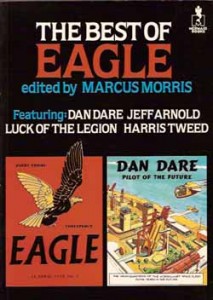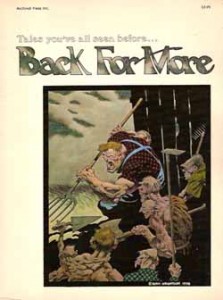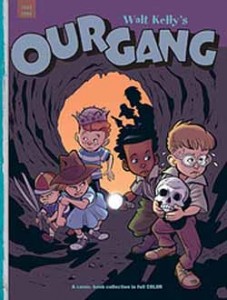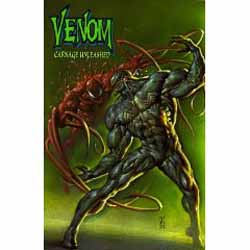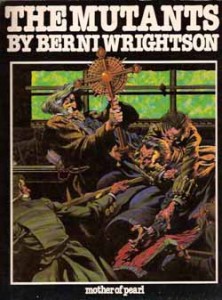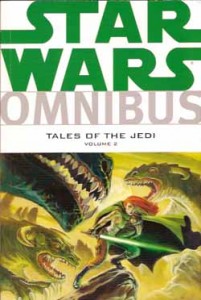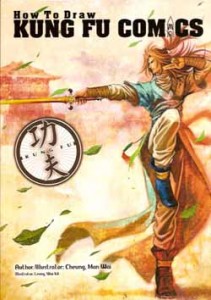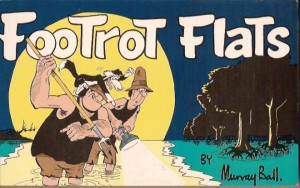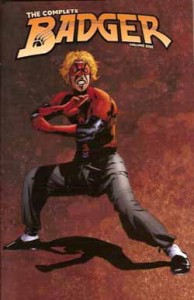
By Mike Baron, Jeff Butler, Bill Reinhold & various (IDW Publishing)
ISBN: 978-1-6001-0129-8
During the huge creative outburst of the early 1980s a number of independent publishers sprang up with an impressive variety of high quality concepts and packages. One of the very best of these was Mike Baron’s captivating psycho-warrior The Badger. Originally part of the superb Capital Comics line (other class acts included Baron and Steve Rude’s Nexus and Steven Grant & Rich Larson’s Whisper) the series – all of them – were snatched up by highly perspicacious First Comics when Capital closed its publishing division to concentrate on distribution.
Norbert Sykes is a Vietnam veteran and expert in many forms of martial arts. On his return to Madison, Wisconsin after his tour of duty he is institutionalised for maiming some frat boys he caught torturing ducks in a park. In the asylum he meets an immortal Celtic wizard named Ham (full name Hammaglystwythkbrngxxaxolotl – and I only typed that to teach my spellchecker a lesson) and case worker Daisy Fields. Norbert has at least seven distinct personalities and can communicate with animals; Ham likes to cause trouble and Daisy… Daisy hates being patronised by imbeciles in positions of authority…
Recently awoken from a fifteen hundred year coma, Ham engineers his and Norbert’s release, hires Daisy as his assistant and uses his magic to amass real 20th century power – vast wealth. Deep down though the wizard is still the anarchic, amoral druid who plays with weather systems by spilling innocent blood…
And thus begins one of the strangest superhero comics ever crafted. Raw, rebellious, rambunctious and never conventional, this is an engaging and unique take on men in tights best described by the series own tag line ‘Put on a costume and fight crime? You’d have to be Crazy!’
This collection assembles the four Capital issues and the next two from pick-up publisher First and although there are few problems with the early colour reproduction, it’s a delight to see Madison’s Finest back on the shelves. Mike Baron has a profound love for Hong Kong cinema with its spectacular fights and impenetrable internal logic, and that “go with the flow†attitude is evident in this glorious, manic riot of comedy, sly commentary, frank character-play and all-out action.
After the necessary introductions of the first issue the narrative rockets along as the new associates set up house in the ugliest mansion in Wisconsin. Norbert resumes his career as a street vigilante, Ham plays nasty games with the eco-system and, from Tibet, agents from the ancient Society to Obliterate Sorcery come a-calling…
The second issue also featured a couple of vignettes – more shaggy-dog stories than actual adventures – by Baron, Rick Burchett, Charles Truog and Butler, and these provide some fine insights into the cast and characters.
The third issue ‘The Day the Comics Fell’ (pencilled by Burchett and inked by Dennis Wolf) is an action extravaganza that devolves into high satire when the Reverend Leopold Grabbitt hits town determined to save the “Chillun of Amercuh†from the sinful horrors of comic books. Would that his fate at the hands of Ham could be reproduced in the real world…
That issue was topped off by a further delving into the 4th Century origins of the weather wizard by Baron and Butler, and the last Capital issue deals with the repugnant world of dog-fighting in salutary and satisfactory fashion. The creators frequently used the comic as vehicle for satisfying scores – and more power to them!
At the end of the issue Badger was literally banished to Limbo and when First Comics picked up the series months later they first guested Norbert in the already established Nexus (issues #6-7). Unfortunately that tale isn’t reprinted here, but the action does pick up with issue #5. The Badger’s return to Earth coincides with Ham’s battle to save a 1600 year old tree from an energy conglomerate that plans to turn rural Wisconsin into an experimental Uranium refinery.
That battle takes the remaining two issues in this first volume (crafted by the new creative team of Baron, Bill Reinhold and Jeff Dee) and grippingly escalates into one of the strangest environmental campaigns of all time, but the resolution isn’t a comfortable ending and this volume ends on something of a cliffhanger, but that’s only a minor annoyance, isn’t it?
This is another big box of comics delight: frantic, captivating and deliciously habit-forming. If you crave angst-free, full-on fun and excitement The Badger is well worth tracking down.
© 1982-2007 First Comics, Inc. All Rights Reserved.


